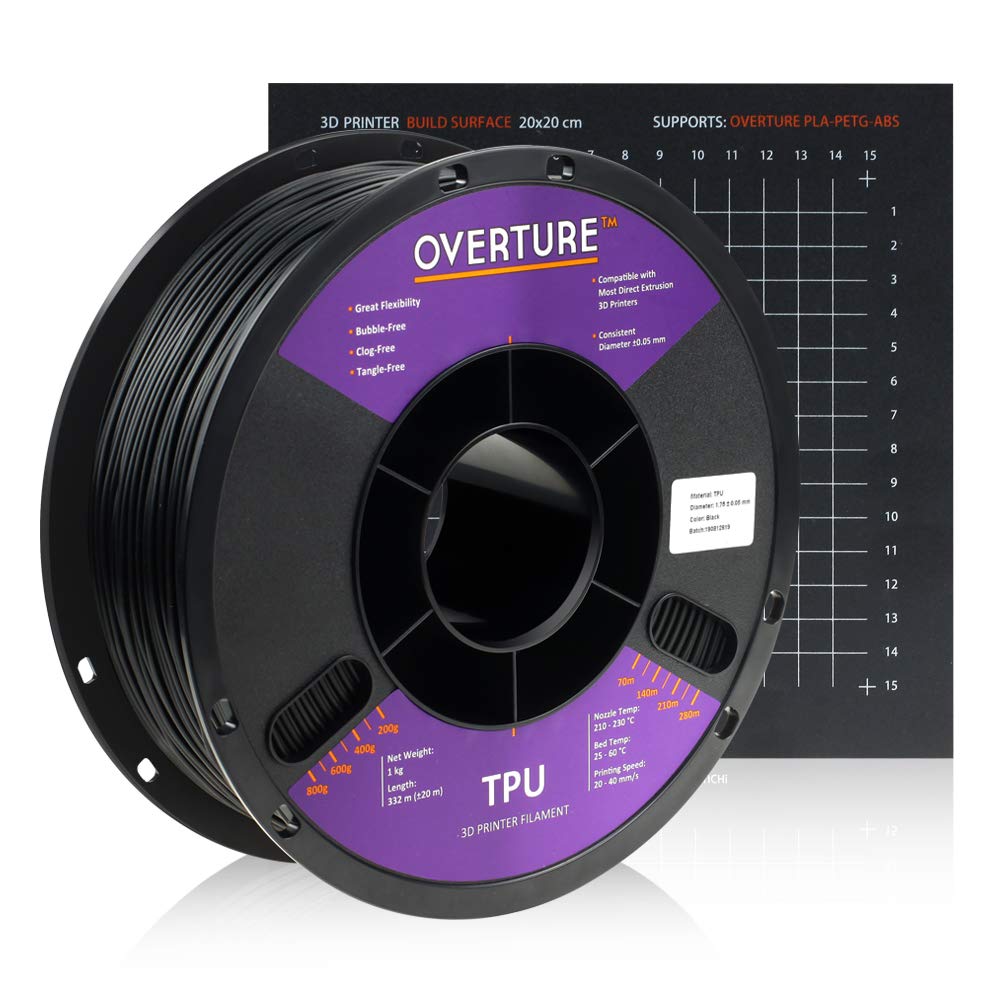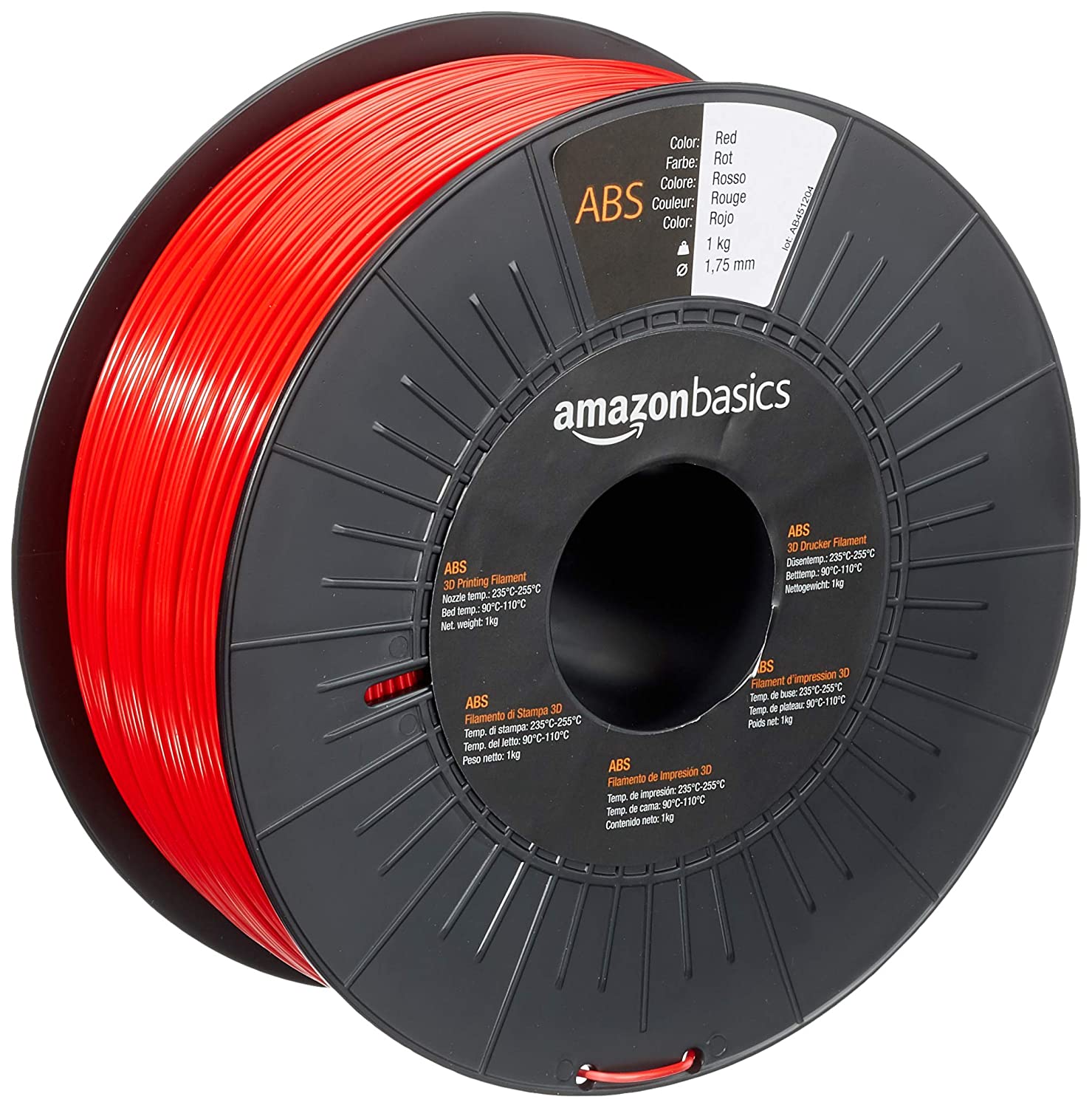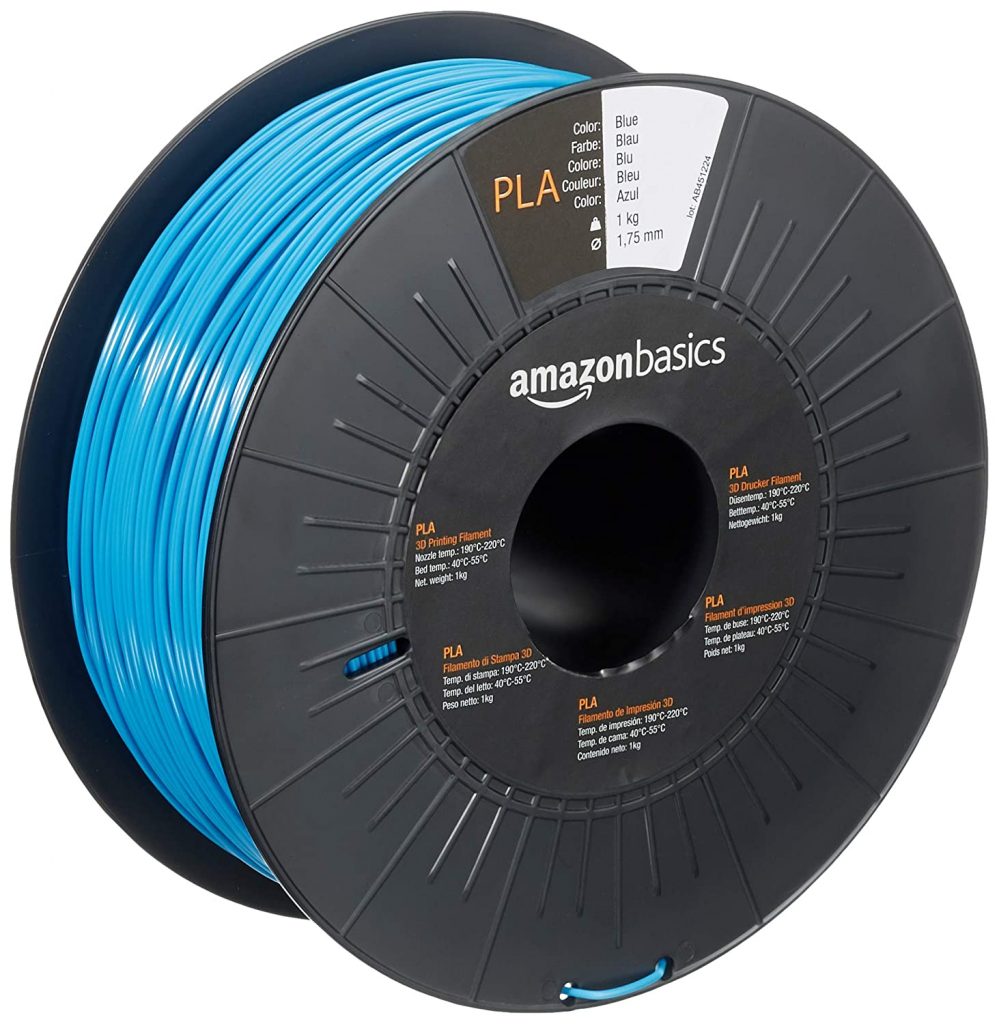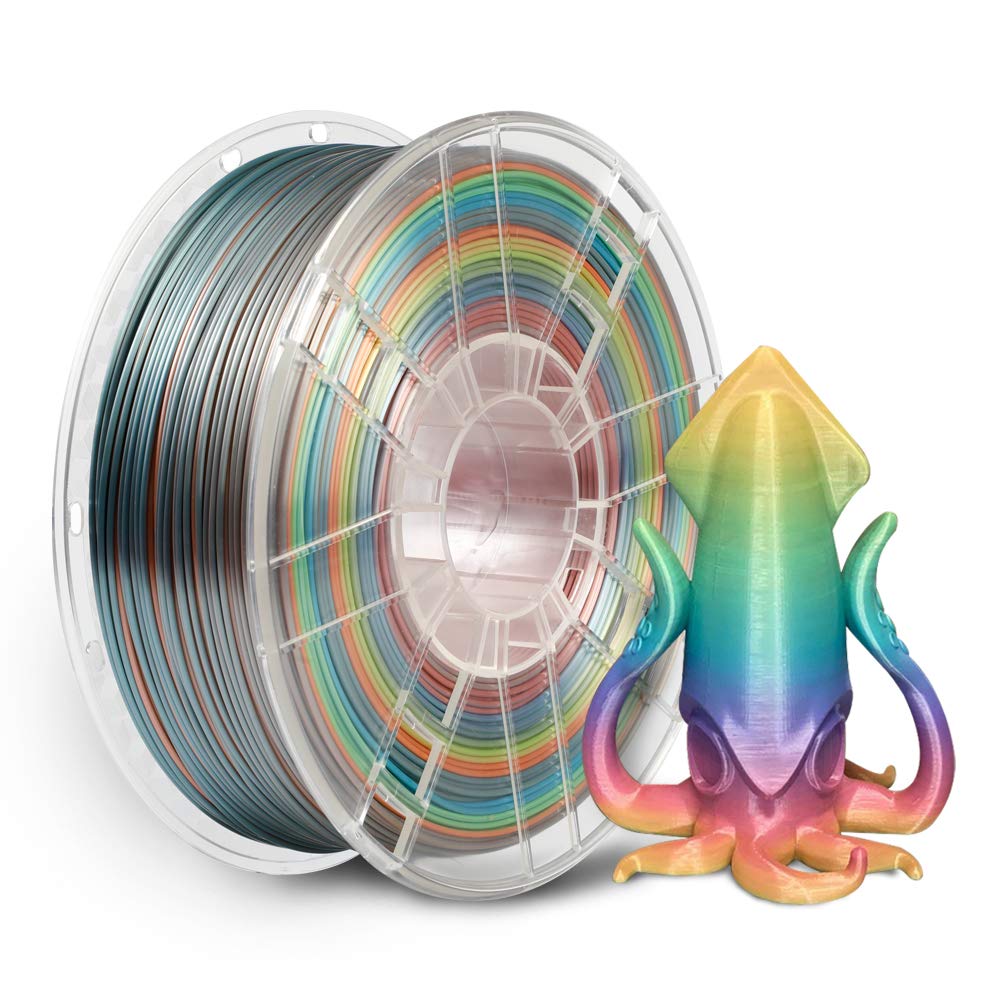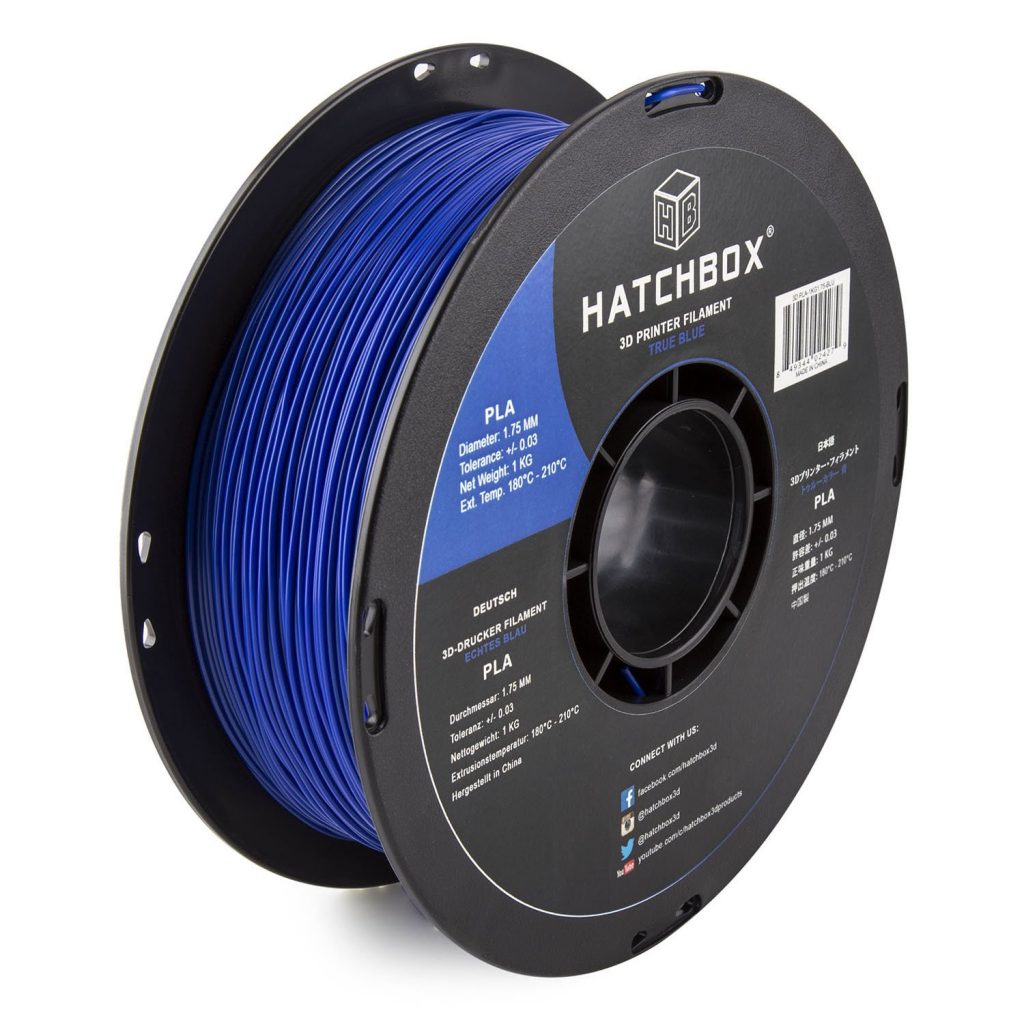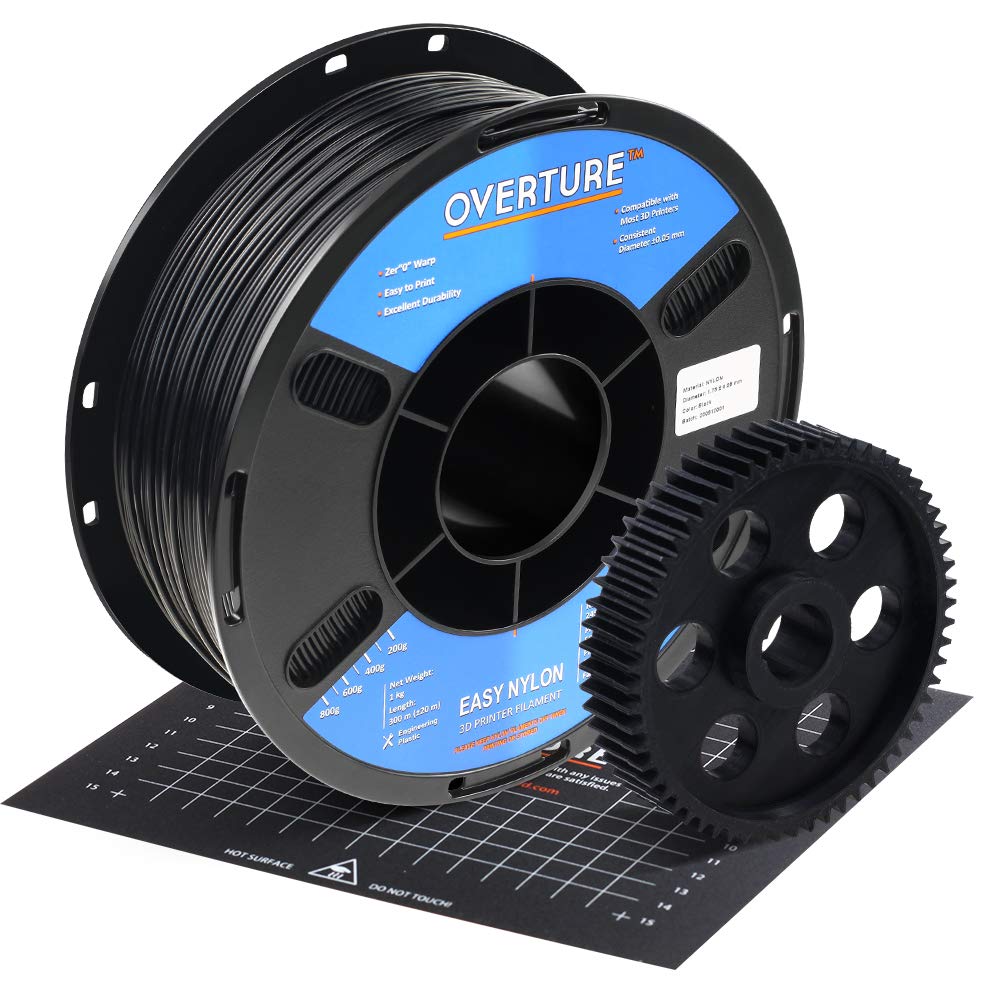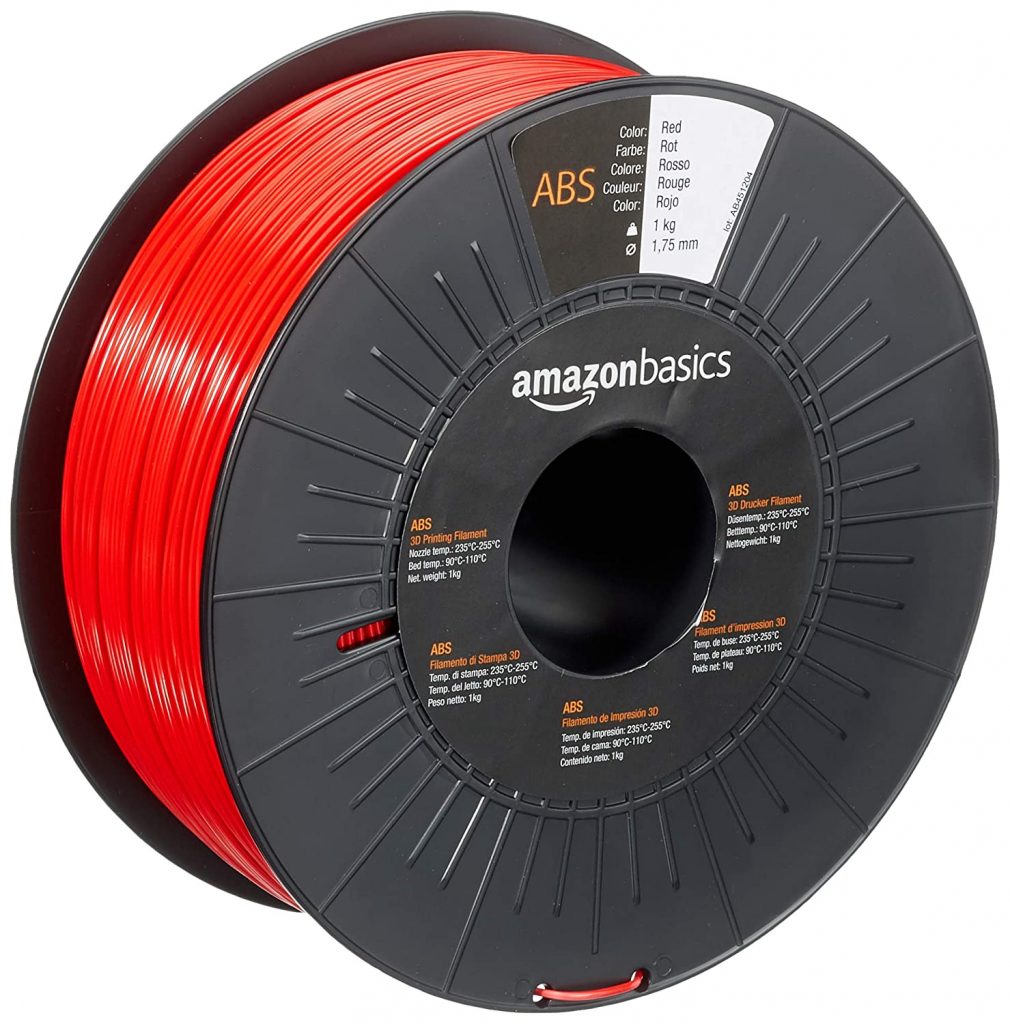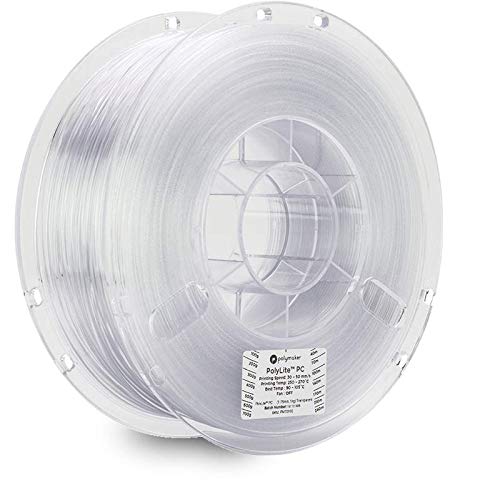A 3D printer can be like a dream come true for most costumers. Not too long ago the idea of being able to build anything from your home was just sci-fi, and now it’s a real possibility we can all reach. However choosing the right printer model is just the first step. All too often when choosing a new product we only focus on what’s right in front of us. But knowing what are the right 3D printer filaments to use matters as much as your printer model.
Thankfully that’s what we are here for, so without further ado let’s take a look at the best 3D printer filaments in the market and see how you can take your 3d printing to the next level.
Our 5 Top Picks
Amazon Basics PLA
PLA is one of the most common 3D printer filaments for a reason, it’s easy to use and has little drawbacks. PLA grants your projects a glossy finish and is also largely compatible with functionally all models as it doesn’t need a lot of heat to melt. Amazon’s take on the traditional PLA filament is one of the best options in the market thanks to it’s reliability which includes an anti-jamming design. As well as it’s affordability and one-year warranty. The Amazon Basics filament doesn’t do anything too wild but it’s the perfect entry point filament for newcomers to the world of 3d printing. And simple but solid is often all one needs
Nova Maker Rainbow Filament
The Nova Maker Rainbow Filament is another PLA filament like the one above, however it does have a few set of unique differences. Nova Maker’s filament is slightly softer, so it prints even more consistently while still offering a great finished product. Much like the best products it’s also designed to avoid tangling in your machine and more interestingly it has a completely unique color property. The Rainbow filament as the name implies comes in a wide color spectrum and is designed in such a way that it can give a consistent gradient look to any of your projects. An unique look coupled with high quality and affordability make this filament another great option.
HatchBox PLA
As we continue our trek on the list of PLA filaments we come across one of the most unique options out there. HatchBox PLA is rather unique in the market, and not as commonly sold as it’s peers. Basically HatchBox PLA handles heat differently and a such expands more when heated for printing. As a result you can expect your finished products to be notoriously lighter, but also to consume less material. HatchBox filament is a great option to save money without sacrificing quality and that makes it one of the top options in the market.
Overture TPU High Speed Filament
Overture is to begin with one of the most reliable brands in the 3D printer world so buying from them you can expect guaranteed quality and great support regardless of your needs. However what stands out in their high speed filament is the material. TPU is in short “bendy”. Unlike PLA which grants a rigid final result TPU filaments allow projects to have a soft and rubbery finish, making it ideal for phone cases or toys. Not all projects need to be rubbery so TPU might not be the best pick for your general use filament. But when you need to go bendable, Overture has your back with one of the best TPU filaments currently being sold.
Overture Nylon Filament
For those looking who are looking for the best possible finish on all of their future prints the answer will likely always be to go for Nylon. Nylon 3d printer filaments largely offer the best balance of durability, flexibility and finish in the market. And for those who are particular about the end result or need to 3D print pieces that will see heavy use Nylon is their best ally. That said it does come with some caveats compared to the sheer simplicity of PLA. Nylon tends to be more expensive and requires a 3D printer with high bed temperatures. Additionally it can be affected by moisture so extra care should be taken when storing it.
Amazon Basics ABS
Much like our previous Amazon recommendation Amazon Basics offer the best entry level option for those looking for a simple but reliable filament to begin testing the power of their 3D Printer. ABS is probably the second most popular filament in the market and that’s due to a combination of low cost and it’s sheer durability. Large companies like Lego rely on ABS due to how strong it is, and you can expect a strong print when you use ABS. That said ABS needs high temperatures, so a strong printer and a well ventilated space are must haves when using ABS on your setup.
Duramic 3D PETG Printer Filament
PETG is yet another material used as a 3D printer filaments, however in this case it can easily be seen as a middle point between PLA and ABS. With a PETG filament you can expect the general ease of use that comes with PLA with the extra sturdiness of ABS. And this all comes together with the quality assurance that is a Duramic product. Duramic offers all costumers a free trial as well as their money back if the product is not to their standards. But the combination of an affordable cost and high quality materials makes it very unlikely you’ll ever need it. That said PETG does have one issue, and that’s being rather susceptible to scratches. So while PETG might be great for functional uses it might not be the best for fine accessories.
Polymaker Polylite PC
Polycarbonate is simply put the number one filament when it comes to sheer durability and strength, and Polymaker is not only Amazon’s Choice when it comes to Polycarbonate filaments but in general one of the most affordable options in the market. PC is unique not only due to its strength but also it’s clear look, which allows for extra creativity for certain projects. That said this durability comes with it’s own set of needs, PC might just be the most heat dependant filament on this list so not all printers might be able to use it, and it’s also susceptible to moisture so extra care must be taken when storing it. That aside if your setup is up for it, Polymaker will just give you some of the most durable prints you can hope for.
Novamaker Wood
First thing’s first, it’s not actually wood. Novamaker’s Wood filament is just another variant of PLA, however it’s designed to give items a finish not unlike wood, and the effect is really convincing. Novamaker Wood is a great option for those who want to display their creations as is. As the unique finish of this filament will make anything look unique right out from the printer. On the other hand the process Wood PLA has to get it’s unique look makes it slightly more fragile than usual PLA. So Novamaker Wood is in general better for display than play, but the unique finish definitely makes it worth a look.
Gizmo Dorks Copper
Unlike the above option metal 3d printer filaments are actually, well, metal. Or at least partially metal, much like Wood PLA, Metal PLA is designed to copy the finish and feel of traditional metal sculptures. However in the case of products like Gizmo Dorks Copper the PLA does actually countain traces of metal powder, which means the feeling and heft of printed items does remind you of metal. Additionally the copper in the mix means that this filament can in fact be sturdier than regular PLA, meaning that it’s both functional and good looking. That said this can come with it’s own difficulties when printing, Gizmo Dorks Copper only contains up to 25% of Copper which shouldn’t be an issue for most 3D printers, but you might want to double check on your machine’s specifications before committing to a purchase.
FAQ
Are all filaments compatible with all printers?
Filament spools are designed to work on any modern 3D printer load out, however at it’s core this means that they can be loaded into the machine. As we mentioned before different materials have different needs, particularly when it comes to heat, so not all machines might be ideal for printing each filament. Your user’s manual has information on which temperatures and which materials are best suited for your particular machine, and you should give it a quick look before choosing on a filament. PLA filaments however should work on any printer.
Are materials like PLA brand exclusive?
No, PLA, PETG and the like are just classifications for the material used in filaments. Not all brands will carry all filaments, but there’s no such thing as exclusive materials in the market. Our listed options are quite simply the highest rated and most affordable option for each category and do not denote any exclusivity, just the best performance.
Conclusion
Ultimately the question you should be asking yourself when choosing which filament to purchase is what is the intended use for your prints. If you are looking for aesthetics or functionality, that will allow you to make the right choice, and at the end of the day all the 3D printer filaments listed here are great options, the real question is what do you need for your task.





